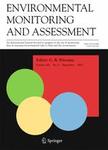版权所有:内蒙古大学图书馆 技术提供:维普资讯• 智图
内蒙古自治区呼和浩特市赛罕区大学西街235号 邮编: 010021

作者机构:China Univ Geosci Beijing Sch Engn & Technol Beijing 100083 Peoples R China
出 版 物:《ENVIRONMENTAL MONITORING AND ASSESSMENT》 (环境监测与评价)
年 卷 期:2021年第193卷第6期
页 面:363-363页
核心收录:
学科分类:0830[工学-环境科学与工程(可授工学、理学、农学学位)] 08[工学]
主 题:VMD SSA LSSVM Water quality prediction Optimization algorithm Hybrid model
摘 要:Accurate and reliable water quality forecasting is of great significance for water resource optimization and management. This study focuses on the prediction of water quality parameters such as the dissolved oxygen (DO) in a river system. The accuracy of traditional water quality prediction methods is generally low, and the prediction results have serious autocorrelation. To overcome nonstationarity, randomness, and nonlinearity of the water quality parameter data, an improved least squares support vector machine (LSSVM) model was proposed to improve the model s performance at two gaging stations, namely Panzhihua and Jiujiang, in the Yangtze River, China. In addition, a hybrid model that recruits variational mode decomposition (VMD) to denoise the input data was adopted. A novel metaheuristic optimization algorithm, the sparrow search algorithm (SSA) was also implemented to compute the optimal parameter values for the LSSVM model. To validate the proposed hybrid model, standalone LSSVM, SSA-LSSVM, VMD-LSSVM, support vector regression (SVR), as well as back propagation neural network (BPNN) were considered as the benchmark models. The results indicated that the VMD-SSA-LSSVM model exhibited the best forecasting performance among all the peer models at Panzhihua station. Furthermore, the model forecasting results applied at Jiujiang were consistent with those at Panzhihua station. This result further verified the accuracy and stability of the VMD-SSA-LSSVM model. Thus, the proposed hybrid model was effective method for forecasting nonstationary and nonlinear water quality parameter series and can be recommended as a promising model for water quality parameter forecasting.